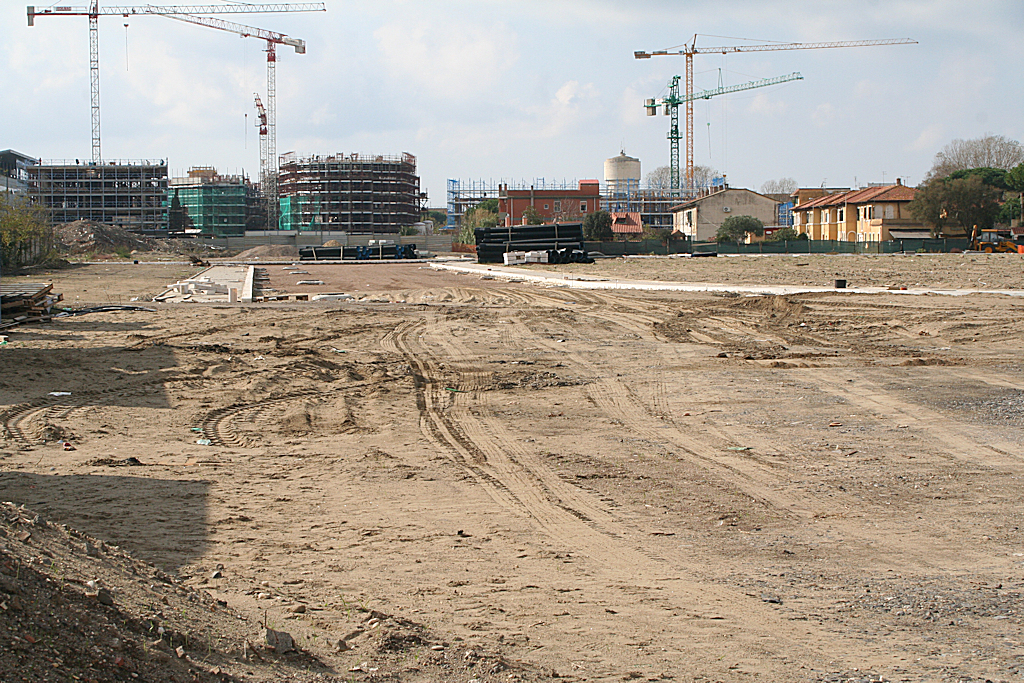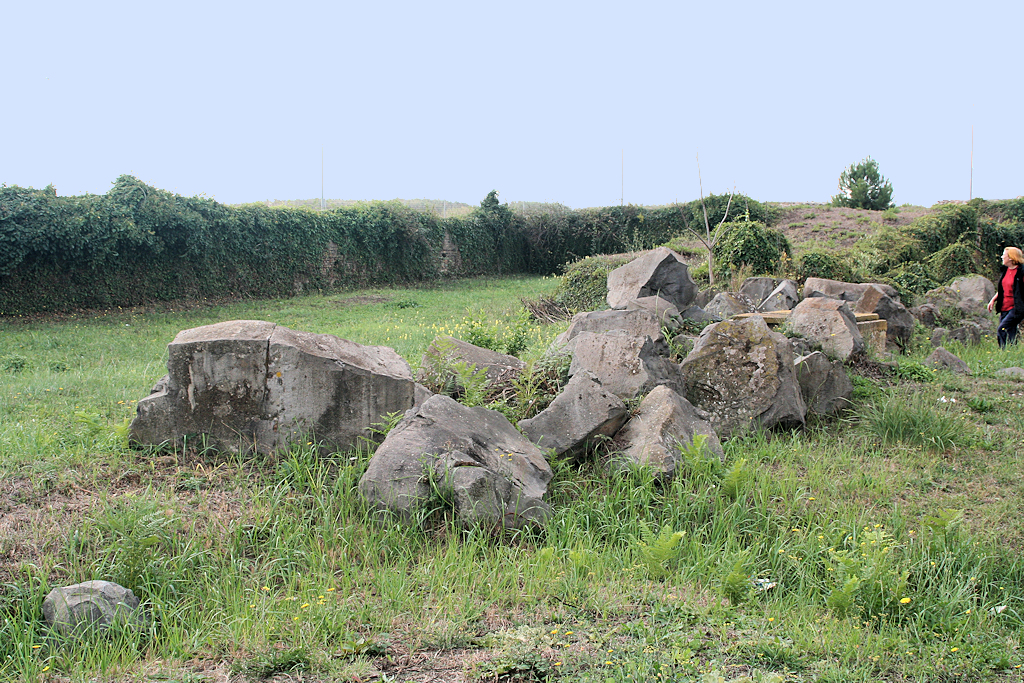Arrival at the harbours
The time of arrival of ships in the harbours could not be predicted with precision. During a windcalm the sailing ships would make little or no progress, in bad weather they sought shelter in the nearest harbour. Sometimes ships sailed in convoys, and the arrival of the most important of these, the convoy from Alexandria bringing Egyptian grain to Rome, was announced by special ships preceding the cargo ships. The crews of the ships approaching the harbours will have breathed a sigh of relief. The bottom of the Mediterranean Sea is littered with shipwrecks.
Most ships would enter the enormous harbour basin of Claudius in Portus, a few kilometers to the north of Ostia. The entrance to the basin was marked by a lighthouse, in antiquity almost always depicted with a fire burning on top. Obviously ships could arrive when it was dark. The lighthouse was a sturdy tower over 100 meters high and with wide, tapering floors. At the beginning of this century, the scant remains were found at a great depth with the help of drilling.

The location of the remains of the lighthouse, found at a great depth, as it appeared in 2007. Photo: Jan Theo Bakker.

A relief of the lighthouse between two cargo ships, reused in the cathedral (duomo) of Pisa. Photo: Massimiliano David.
The lighthouse had been built by Claudius, inspired by the famous lighthouse of Alexandria, the Pharos. It had been erected on a little island between the ends of two moles protruding into the sea. Presumably one of the two resulting passages was used as entrance, the other as exit. The entrance will have been the southern passage, because most ships arrived from that direction. The vast expanse of the harbour basin of Claudius, measuring approximately 1600 x 1300 meters, is today completely filled with earth and partly built up. In the fields where no construction activity has taken place, due to the proximity of Leonardo da Vinci airport, remains of the moles can still be seen.

Building activity on what was once the passage to the south of the lighthouse-island, in 2007. Photo: Jan Theo Bakker.

Large basalt blocks belonging to the base of a mole. Photo: Jan Theo Bakker.
For some ships the destination was Ostia, with quays lining the river Tiber. The mouth of the Tiber was marked by a beacon, today called Tor Boacciana. We have no idea whether a fire ever burned on top. The lower part belongs to the reign of Trajan, the upper part is mediaeval.

Tor Boacciana at the mouth of the Tiber. Photo: Wikimedia, MM.
The situation at the mouth of the river was problematic. Sand banks made access difficult for the largest cargo ships, and on the Tiber there was not much space for manoeuvring. Therefore the cargo in the largest ships was sometimes transferred to lighters or river boats at full sea.

A mosaic showing the transfer of an amphora from a cargo ship to a tow boat by a porter.
Square of the Corporations, statio 25. Photo: Klaus Heese.